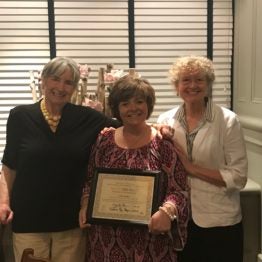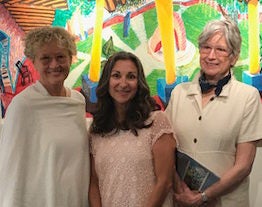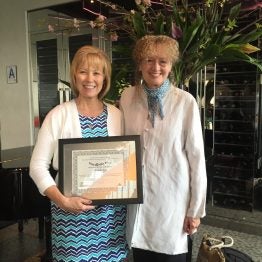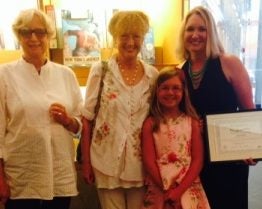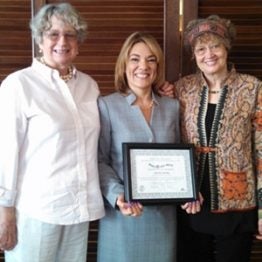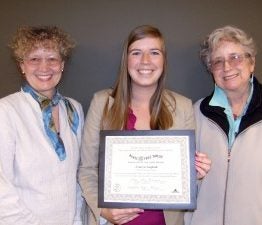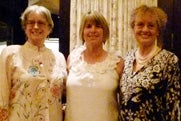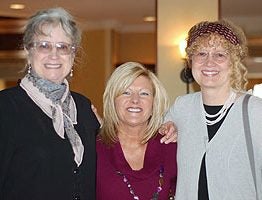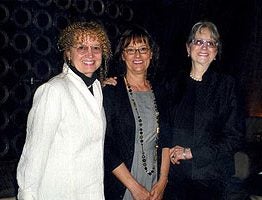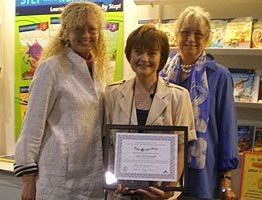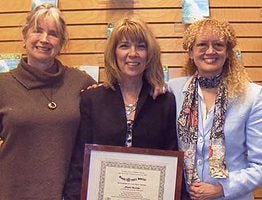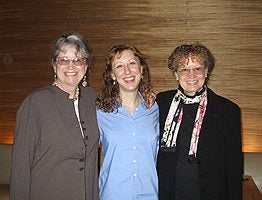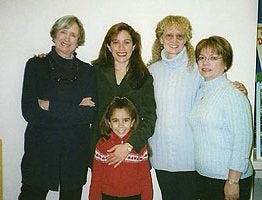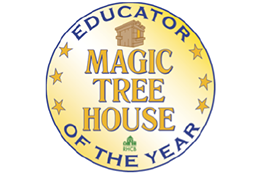
Laura Silverberg
The Cove School in Northbrook, Illinois
Their collective voices rose in (almost) unison:
“The leaves began to tremble (twenty two small arms flailing in the imaginary breeze),
And the wind began to moan (high-pitched voices yawping)
The tree house began to spin (eleven energized bodies gathering gusto). Faster and Faster.
Then all of a sudden it stopped spinning (eleven partially spent bodies) and it was still.
Absolutely still!” (eleven creative minds frozen in time)
Howard Gardner would have called it multiple intelligences. Current pedagogical trends would call it differentiated instruction. But this vivacious group of multi-grade, special education students know it as a roaring classroom favorite. This choreographed routine evolved from our Locomotion Vocabulary Center, an activity designed to foster vocabulary comprehension by acting words out. At the private K-12 special education school where I teach, the Magic Tree House series has found its way into the curriculum, regardless the grade: elementary, junior high and high school. The readability and comprehension level at which the books are written provides for much needed differentiation within the classroom. Some students read independently, while others read along with the teacher. Many students benefit from lessons incorporating Howard Gardner’s multiple learning styles. It is with this “collective”, “spinning” locomotion of song, dance, role-play and, most importantly, imagination, the Magic Tree House program has created an engaging platform that provides students a multitude of ways to demonstrate their intellectual ability and comprehension of literature.
Above all else, the Magic Tree House experience is about bringing literature to life. Accordingly, a week prior to reading each novel, we “fly” to the country where the story is set. Students carefully pack suitcases with the appropriate clothing and accessories in anticipation of each trip. Challenging them to utilize their math skills, students must work within budget and manage their set amount of cash. Evaluating various choices is paramount: do I buy an economy or first class ticket, in-flight beverage or snack, which excursions (activity centers) can I afford and which cuisine items can I purchase at the local restaurants?
Additionally, the learning experience truly capitalizes on cross-curricular integration. In social studies, we are concurrently studying various countries within each of the seven continents. Students explore their geography, literature, cultural intricacies and commonalities. Then, after immersing ourselves in the region or setting’s local flavor we delve into our novel. To bring the characters to life, we summon our puppet main characters: Jack, Annie, Teddy and Morgan LeFaye, whom eager students greet in our own magic tree house replica, which grows magically from the “fertile soil” of our computer center. Students create the puppets using a different puppet-making technique from each continent. Corresponding theater sets reflect the various settings of the story. Students with a penchant for music discover additional avenues of comprehending and contributing to our puppet shows; What is a puppet-theater production after all, without Teddy’s barking, Sukie and Sam’s clicking, Ka and Koh’s screeching or the tiger’s roarrr?
Non-fiction companion guides facilitate interdisciplinary study. Our novel study came to life after we began our first research report about ocean animals incorporating all the animals in Dolphins at Daybreak. The website Ed Helper has ready-made vocabulary and Boardmaker software creates simple visuals. We adorned our own submersible (very large and sturdy decorated cardboard box) with vocabulary creating a Word Sub (instead of a word wall).
As the “spinning tree house” unwinds, eleven students make the round trip from their imagination back to room 216, bringing with them as souvenirs, some of the most visceral experiences of literature and culture they have ever had. Locomotion Vocabulary Center, the Magic Tree House and the stories in this series have become portals, doorways, and embarkation jumping points for student with learning differences to learn in the way s/he learns best.


